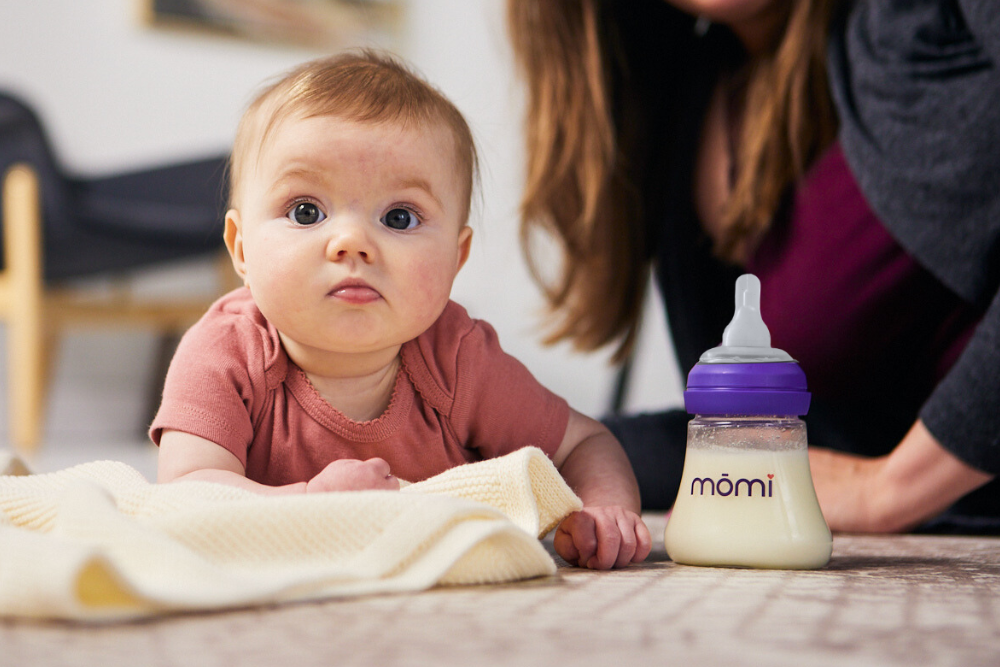As your baby grows and their feeding skills develop, you might wonder when it’s the right time to advance to a higher flow rate nipple. While every baby is unique, there are some general signs to look out for that indicate your baby may be ready for a faster flow.
Signs Your Baby is Ready for a Higher Flow Rate
- Longer Feeding Times: If your baby is taking significantly longer to finish their bottle than usual, it might be a sign that they’re ready for a faster flow. Prolonged feeding can be frustrating for your baby and may indicate that the current flow rate is too slow.
- Falling Asleep During Feeds: If your baby often falls asleep before finishing their bottle, this could be because they’re working too hard to get the milk out. A higher flow rate might help them stay awake and engaged during feeding.
- Increased Fussiness During Feeding: Babies who are ready for a faster flow may become fussy or agitated during feeds. This behavior often stems from frustration with the slow flow, which can make feeding time less enjoyable for both of you.
- Sucking Hard Enough to Collapse the Nipple: If your baby is sucking so hard that the nipple collapses, this can be a sign that they’re ready for a faster flow. A higher flow rate will provide a more satisfying feeding experience without the extra effort.
- Improved Coordination and Stronger Suck: As babies grow, their sucking reflex becomes stronger and more coordinated. If you notice that your baby is able to nurse more efficiently or is showing signs of a strong suck, it might be time to try a faster flow rate.
How to Transition to a Higher Flow Rate
When you decide to move to a faster flow, do so gradually. Start by introducing the new flow rate during one or two feedings a day, and observe your baby’s reaction. If they seem comfortable and continue to feed well, you can gradually increase the use of the higher flow nipple.
Does my baby need a faster flow rate with mōmi?
First, I recommend that you read mōmi’s guidelines on how to choose your flow rate here. It’s important to remember that mōmi nipples require your baby to use oral-facial muscles that most conventional nipples do not. If baby is accustomed to taking other bottles, even if you’ve selected the appropriate mōmi flow rate for your baby, it may take several feedings with mōmi for them to adjust. Babies can get frustrated if the chosen flow rate is too slow.
If you’re using the mōmi bottle to establish or restore breastfeeding, many lactation consultants familiar with mōmi recommend initially increasing the flow rate you offer by one level. Always use caution when offering baby a faster flow, because overfed babies are uncomfortable babies, and consider consulting an IBCLC for support.
Every Baby is Unique
Every baby is different, and sometimes exceptions to these guidelines are necessary. If your baby faces feeding challenges, we encourage you to work with a lactation support professional who can offer personalized advice.
A Quick Reminder: Replace Bottle Nipples Regularly
Regardless of the flow rate you choose or when you move from slow flow to medium or fast, it’s important to replace your baby’s bottle nipples every three months or immediately if they show any signs of wear and tear. Damaged nipples pose a choking hazard, so keeping them in good condition is essential for your baby’s safety.
Conclusion
Advancing to a higher flow rate is a natural part of your baby’s development, but it’s important to pay attention to their cues. By watching for signs of readiness, making a gradual transition, and regularly replacing bottle nipples, you can ensure that your baby remains safe, comfortable and well-fed as they grow. Remember, when it comes to flow rate, the general rule is: start low and go slow!



